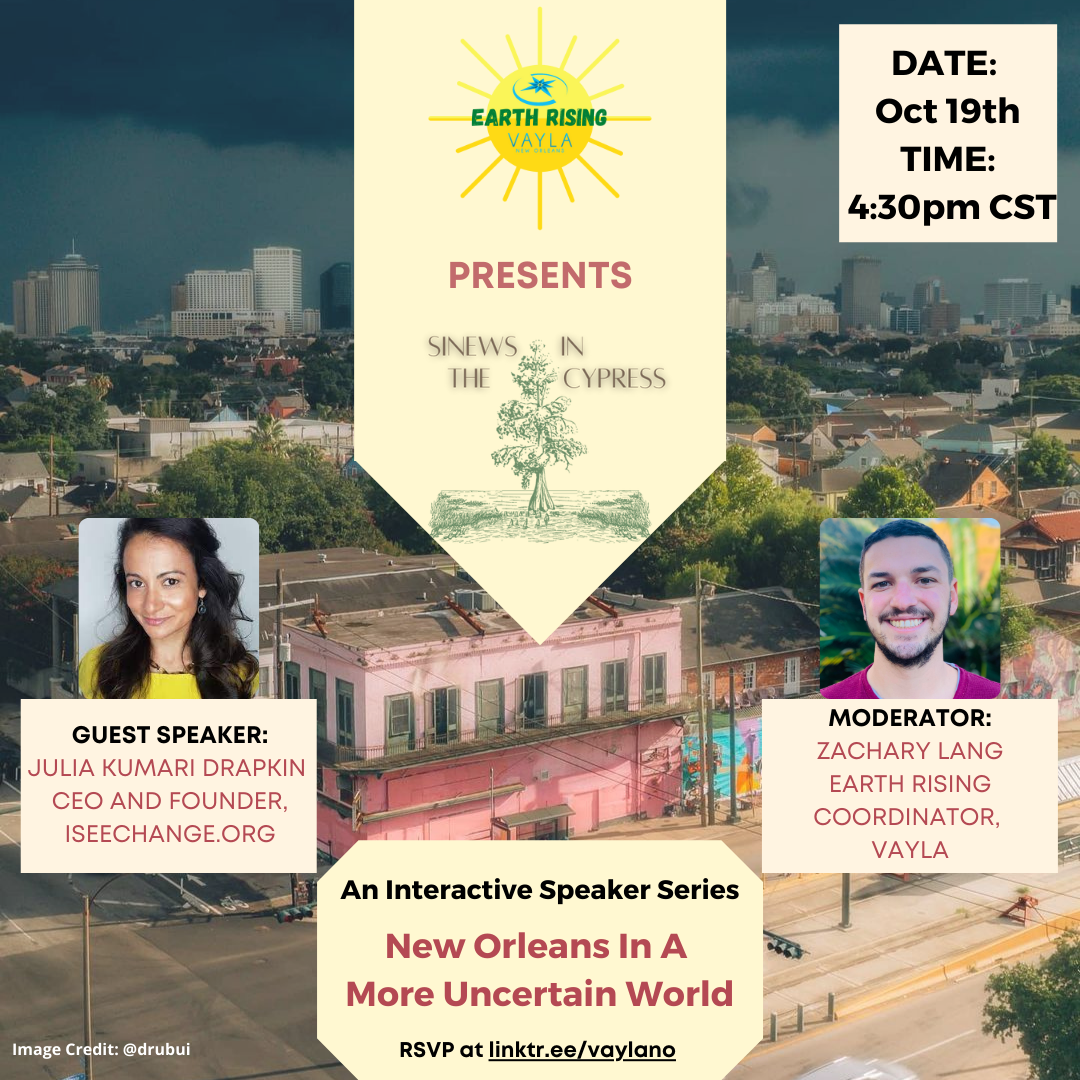
- This event has passed.
Sinews in the Cypress: New Orleans in a More Uncertain World
October 19, 2021 @ 4:30 pm - 5:30 pm
Free
Join VAYLA as we explore how climate change is impacting our community and making life more uncertain in our city.
In this installment of Sinews in the Cypress guest speaker series, we bring in Julia Kumari Drapkin to discuss extreme weather in New Orleans. Julia is the CEO and founder of ISeeChange, an award winning climate change tech company. At our event we will explore extreme weather events, such as extreme heat and flooding, while also exploring the importance of localized reporting.
This event will be moderated by our Earth Rising Coordinator, Zachary Lang. Through this discussion we hope to amplify the work that ISeeChange is doing in our community as well as show opportunities for community members to get involved in efforts to combat climate change.
——————————————————————————-
The name Sinews in the Cypress speaks to the deep ties that Louisianans have to their environment and more specifically the wetlands. The Bald Cypress is the state tree of Louisiana, a staple of the most prevalent ecosystem in the state and is one of the most ubiquitous and broadcasted species found throughout the state. In the environmental world it is ambassador for the wetlands and Louisiana. The Bald Cypress is also extremely resilient, much like the population of Louisiana, and is resistant to decay, often called the wood eternal. The term sinew has two connected yet different meanings. First, it is used to describe a piece of tough fibrous tissue uniting tissue to bone as well as bone to bone. The other definition for a sinew is the part of a structure or system that gives it strength and binds it together. The term sinew gives a humanistic vision to the project as well as a show of strength and resilience that the people as well as the Louisiana environment display. Lastly, when the bald cypress grows in the swamps it develops a unique texture that is often described as sinewy, resembling tendons in person.